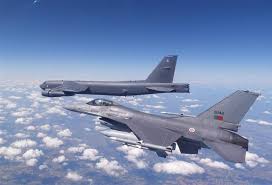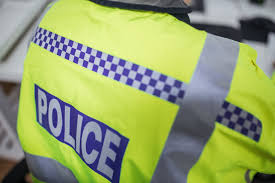S. Korea in shock, grief as 153 die in Halloween crowd surge

Seoul: Concerned relatives raced to hospitals in search of their loved ones Sunday as South Korea mourned the deaths of at least 153 people, mostly in their teens and 20s, who got trapped and crushed after a huge Halloween party crowd surged into a narrow alley in a nightlife district in Seoul.
Tens of thousands of people were believed to have gathered in Itaewon for festivities. Witnesses say the streets were so densely clogged with people and slow-moving vehicles that it was practically impossible for emergency workers and ambulances to reach the alley near Hamilton Hotel, as the situation quickly developed into one of the country’s worst disasters in years.
There were concerns the death toll could grow as 24 people among the 104 being treated for injuries are in critical condition, according to Seoul City’s disaster headquarters.
The city government said more than 2,600 people have called or visited a city office in nearby Hannam-dong as of Saturday afternoon, reporting their relatives as out of contact and asking officials to confirm whether they were among those injured or dead after the crush.
The dead included 19 foreigners, said Choi Seong-beom, chief of Seoul’s Yongsan fire department. South Korea’s Foreign Ministry did not confirm the nationalities of those victims, but it said that they alerted their countries’ embassies in Seoul. The Chinese state news agency Xinhua said at least three Chinese nationals were killed.

The bodies of the dead were being kept at 42 hospitals in the capital, Seoul, and nearby Gyeonggi Province, according to Seoul City, which said it will instruct crematories to burn more bodies per day as part of plans to support funeral proceedings.
Around 100 businesses in the Hamilton Hotel area have agreed to shut down their shops through Monday to reduce the number of partygoers who would come to the streets through Halloween Day.
An estimated 100,000 people had gathered in Itaewon for the country’s biggest outdoor Halloween festivities since the pandemic began and strict rules on gatherings were enforced. The South Korean government eased COVID-19 restrictions in recent months and this was the first big chance to get out and party for many young people.
While Halloween isn’t a traditional holiday in South Korea, where children rarely go trick-or-treating, it’s still a major attraction for young adults, and costume parties at bars and clubs have become hugely popular in recent years.
Itaewon, near where the former headquarters of U.S. military forces in South Korea operated before moving out of the capital in 2018, is an expat-friendly district known for its trendy bars, clubs and restaurants and it’s the city’s marquee Halloween destination.

Officials initially said 150 people were injured as of Sunday morning before later lowering their tally. National Fire Agency officials didn’t immediately explain why the tally was reduced but said emergency workers would have had a more accurate idea of the casualties as rescue operations proceeded and that some of the injured would have been converted to deaths. It was also possible that some of those who were lightly injured had returned home overnight and were no longer counted.
South Korean President Yoon Suk Yeol declared a national mourning period on Sunday and ordered flags at government buildings and public offices to fly at half-staff. During a televised speech, Yoon said supporting the families of the victims, including their funeral preparations, and the treatment of the injured would be a top priority for his government.
He also called for officials to thoroughly investigate the cause of the accident and review the safety of other large cultural and entertainment events, including regional festivals, to ensure they proceed safely.
“This is really devastating. The tragedy and disaster that need not have happened took place in the heart of Seoul amid Halloween (celebrations),” Yoon said during the speech. “I feel heavy hearted and cannot contain my sadness as a president responsible for the people’s lives and safety.”
After the speech, Yoon visited the Itaewon alley where the disaster occurred. Local TV footage showed Yoon inspecting the alley filled with trash and being briefed by emergency officials.
It was not immediately clear what led the crowd to surge into the narrow downhill alley near the Hamilton Hotel, a major party spot in Seoul. One survivor said many people fell and toppled one another “like dominos” after they were pushed by others. The survivor, surnamed Kim, said they were trapped for about an hour and a half before being rescued, as some people shouted “Help me!” and others were short of breath, according to the Seoul-based Hankyoreh newspaper.
Another survivor, Lee Chang-kyu, said he saw about five or six men push others before one or two began falling, according to the newspaper.
In an interview with news channel YTN, Hwang Min-hyeok, a visitor to Itaewon, said it was shocking to see rows of bodies near the hotel. He said emergency workers were initially overwhelmed, leaving pedestrians struggling to administer CPR to the injured lying on the streets. People wailed beside the bodies of their friends, he said.
Another survivor in his 20s said he avoided being trampled by managing to get into a bar whose door was open in the alley, Yonhap news agency reported. A woman in her 20s surnamed Park told Yonhap that she and others were standing along the side of the alley while others caught in the middle of the alley had no escape.
Choi, the fire department chief, said that bodies were being sent to hospitals or a gym, where bereaved family members could identify them. He said most of the dead and injured are in their 20s.
“Horrific news from Seoul tonight,” British Prime Minister Rishi Sunak tweeted. “All our thoughts are with those currently responding and all South Koreans at this very distressing time.”
Jake Sullivan, the U.S. national security adviser, tweeted that reports of the disaster were “heartbreaking” and said Washington “stands ready to provide the Republic of Korea with any support it needs.”
The last South Korean disaster this deadly also hit young people the hardest. In April 2014, 304 people, mostly high school students, died in a ferry sinking. The sinking exposed lax safety rules and regulatory failures. It was partially blamed on excessive and poorly fastened cargo and a crew poorly trained for emergency situations. Saturday’s deaths will likely draw public scrutiny of what government officials have done to improve public safety standards since the ferry disaster.
It was also Asia’s second major crushing disaster in a month. On Oct. 1, police in Indonesia fired tear gas at a soccer match, causing a crush that killed 132 people as spectators attempted to flee.
More than 1,700 response personnel from across the country were deployed to the streets to help the wounded, including about 520 firefighters, 1,100 police officers and 70 government workers. The National Fire Agency separately said in a statement that officials were still trying to determine the exact number of emergency patients.
This was the deadliest crushing disaster in South Korean history. In 2005, 11 people were killed and around 60 others were injured at a pop concert in the southern city of Sangju.
In 1960, 31 people died after being crushed on the stairs of a train station as large crowds rushed to board a train during the Lunar New Year holidays.





